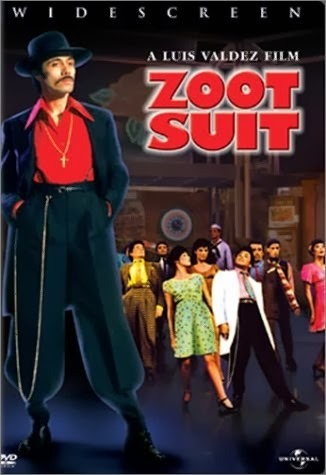Goodbye, Jose Jimenez?

The recent passing of veteran actress Carmen Zapata, best known to the moviegoing public for playing a nun in Sister Act, made me think about the status of Latin Americans in Hollywood. Carmen, born in New York to a Mexican father and Argentine mother, had a longstanding gig as Doña Luz on PBS’s bilingual children’s program, Villa Alegre. Bilingual programming was very close to her heart. When I interviewed her in 1973, she had just helped found a Los Angeles theatre group, the Bilingual Foundation of the Arts. It still exists, providing training for actors, translating Spanish-language drama into English, and presenting plays in both languages.
My interest in Hollywood’s Mexican-American heritage was first piqued when I visited the LA Plaza de Cultura y Artes, a stone’s throw from Downtown L.A.’s kitschy Olvera Street. The Plaza’s splendid new museum colorfully illustrates the history of Mexican Americans in Southern California. The section on the movie industry points out that, in the era of silent films, Mexican-born actors had no problem finding acceptance in Hollywood. Ramon Novarro played Ben-Hur and other mainstream leading-man roles; Dolores del Rio, Lupe Velez, and the handsome Gilbert Roland became stars. When talkies arrived, though, Mexicans were suddenly limited to stereotypical parts: the Latin Lover, the charro, the seductress, the spitfire.
Years later, the great Anthony Quinn (born in Mexico, raised in East L.A.) enjoyed a major career, but one that tended to confine him to ethnic and outrageous roles. In the banner year 1956 he played Quasimodo in The Hunchback of Notre Dame and won an Oscar for portraying Paul Gauguin in Lust for Life. He was an Arab in Lawrence of Arabia (1962), danced joyfully on a Cretan beach in Zorba the Greek (1964), and often played Italian, as in The Secret of Santa Vittoria (1969).
It was in 1965 that Luis Valdez founded a farmworkers’ theatre, El Teatro Campesino, in rural Delano, California, as the cultural arm of the United Farm Workers. Early performances were strongly political, with a focus on Chicano issues. By 1978, the troupe had grown sophisticated enough to interest L.A.’s respected Center Theatre Group. Zoot Suit highlighted the racial injustice surrounding the infamous Sleepy Lagoon Murder trial of 1942. The production galvanized Los Angeles, and made a star out of Edward James Olmos, who played the iconic El Pachuco. When I met Olmos behind the scenes, he was friendly and soft-spoken, but he commanded the stage in a way that was unforgettable. His 1981 role in a film version of Zoot Suit led to a key non-ethnic part in Blade Runner, and then a Best Actor Oscar nomination for portraying gutsy teacher Jaime Escalante in 1988’s Stand and Deliver. (Valdez himself, six years after directing the Zoot Suitfilm, had his biggest Hollywood moment at the helm of La Bamba, the Richie Valens story.)
Today, of course, there’s more opportunity for Latino actors like Salma Hayek, Oscar-winner Benicio del Toro, America Ferrera, and Andy Garcia (who got some of his training at Carmen Zapata’s Bilingual Foundation of the Arts). But old stereotypes die hard, and plenty of Latin-Americans are still stuck playing gardeners and maids. A young Broadway actress with Mexican roots recently appeared in a new musical production, in the role of a beauty queen. The part required her to be ditzy, but ethnically neutral. Then the producers asked for a change: could she lay on a thick Chica accent? She could and did (a featured role is featured role!), and the shift generated a lot of laughs. Still, though, it didn’t feel good.

Published on January 21, 2014 12:00
No comments have been added yet.
Beverly in Movieland
I write twice weekly, covering topics relating to movies, moviemaking, and growing up Hollywood-adjacent. I believe that movies can change lives, and I'm always happy to hear from readers who'd like t
I write twice weekly, covering topics relating to movies, moviemaking, and growing up Hollywood-adjacent. I believe that movies can change lives, and I'm always happy to hear from readers who'd like to discuss that point.
...more
- Beverly Gray's profile
- 10 followers



